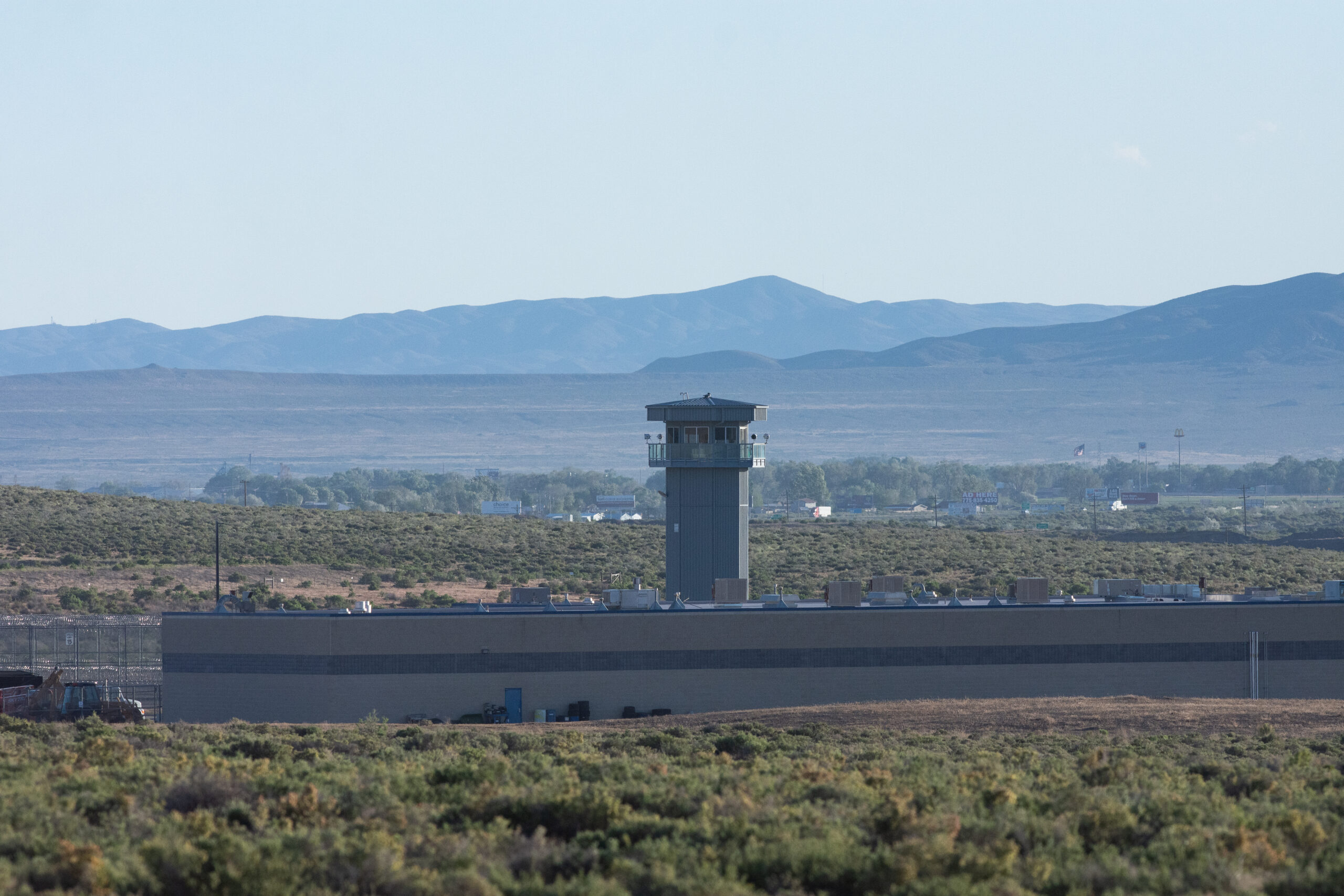Report sought by governor recommends reducing prison population in health crises

An independent report commissioned by Nevada's governor and legislative leaders has recommended an action that inmate advocacy groups long supported but was never implemented — that the state should deliberately reduce its prison population to address current and future pandemics.
The Nevada Department of Corrections (NDOC) had a significantly higher rate of death than neighboring states and the third-highest death rate out of 45 states examined by the Crime and Justice Institute (CJI) in the report, which was issued in March. Although COVID transmission rates in Nevada prisons and outside ranked in the middle of the pack among states, the state prison system had an estimated COVID case rate of 399 per 1,000 individuals in custody, about four times the state’s overall case rate in the general population of 99 per 1,000 residents.
The prison death rate in Nevada as of March 2021 was 4.7 per 10,000. Meanwhile, the community death rate in the state at large was 2.7 per 10,000 as of Dec. 31, 2021.
The report recommended that in future health crises, state leaders should take action to grant early release to individuals convicted of low-level offenses. Gov. Steve Sisolak and other decision-makers did not act on repeated requests from activists during the pandemic to release more inmates as a health precaution.
“Apart from existing mechanisms, the state took no executive action to release individuals from prison in contrast to some leaders across the country,” report authors wrote. “This inaction is notable given the pressing need to reduce density to mitigate the spread and prevent harm to individuals within Nevada’s prison system.”
The report stems from Sisolak and other state leaders’ request last year that CJI conduct an assessment of how the pandemic was handled by the justice system and how the health crisis affected implementation of a 2019 law overhauling criminal justice statutes that emerged from CJI suggestions. However, UNR criminal justice Professor Jennifer Lanterman said data will have to be assessed for years after COVID-19 to truly understand how it affected the implementation of the law (AB236), which sought to reduce prison expenditures.
“You'll need several years of data … by month to observe trends,” said Lanterman.
The report did offer recommendations to the Nevada Department of Corrections (NDOC) for safely managing COVID-19 and future pandemics. Inmate advocacy groups, including the ACLU of Nevada, said the report’s findings backed up their position that state leaders’ refusal to release certain prisoners during the height of the pandemic caused unnecessary infections and death.
“We warned about high death rates. We warned about what the prison conditions could lead to during the COVID-19 pandemic,” Holly Welborn, policy director for ACLU Nevada, said in an interview.
The report’s findings add more data to conversations started by advocates critical of NDOC’s “firewall strategy” to severely limited programming and bar visitation in the prisons in an attempt to control COVID, instead of releasing more people. The prevalence of mental health issues among people admitted to NDOC rose during the pandemic, the report found.
Welborn said prisoners experienced extreme isolation that kept inmates in cells at least 20 hours a day, which complicated things like food distribution, social distancing and access to adequate health care.
“Instead of responding adequately, to get people the health care they needed … the department responded by locking people down,” Welborn said.
NDOC officials did not provide comment on the report’s findings before press time. Sisolak spokeswoman Meghin Delaney said in an email that the governor and NDOC leadership will continue to review recommendations from CJI and identify where they can be implemented.
“The Governor made decisions by taking in the nuances and totalities of every situation, consulting with advisors and public health experts. None of the decisions were easy and the Governor focused on protecting lives and livelihoods with his actions,” Delaney wrote.
Prison population drops for other reasons
Even without organized action to release inmates, there was at least a 30 percent decrease in Nevada’s prison population from 2020 to 2021. The report delved into numerous pandemic-related causes for the drop, including changing priorities for law enforcement that led to fewer admissions and police interactions during COVID-19, and altered court processes that delayed the timeline for people moving from jail to prison. The population decrease mirrored a nationwide trend.
But a wide range of variables makes it a challenge to understand how much of the drop in the prison population is sustainable because of policies passed in recent years, and how much was a temporary result of the health crisis.
“We will need additional years of data … to understand the effect of AB236 on the population of [the] department of corrections versus the impact of COVID-19,” Lanterman said.
Lanterman also sits on the state’s sentencing commission, which is tasked with examining and tracking patterns to reduce local jail and prison populations while strengthening public safety. She said they will likely discuss the CJI report at the next commission meeting.
Handling future public health crises
CJI’s recommendation on safely reducing the prison and jail populations in the event of future health crises suggests creating a mechanism for public health emergencies to release individuals whose sentences are nearing expiration or release low-level offenders, such as geriatric populations, nonviolent or non-sex offenders and those incarcerated on a technical parole violation (one that violates the terms of parole but does not constitute a new crime).
The institute also recommended that NDOC improve communication and increase transparency by creating weekly or monthly newsletters for incarcerated individuals, updating them on new policies, the status of the pandemic and relevant public health information.
Outside organizations such as Return Strong Families United for Justice for the Incarcerated have kept up on conditions inside state correctional facilities during the pandemic by exchanging letters with those in custody. Jodi Hocking, the group’s founder, said information given by the NDOC has differed from what inmates have reported.
“Somehow NDOC’s numbers never match what seems to be happening in real-time,” Hocking said.
The report also suggested that state officials find a way to increase the volume of post-prison housing and reentry services to match the need throughout the state. The CJI report found that the number of releases from prison fell during the pandemic by more than 20 percent.
According to activists, finding suitable housing for people leaving prison was a key issue holding up releases. Welborn said prison officials were concerned about releasing people with no identified housing options, but argued that hundreds of families were ready to welcome home loved ones during the crisis.
“That’s been one of the major pushbacks, even during the state of emergency — they’re worried about releasing people to the community with no housing options,” Welborn said. “Through this report, we can see the damage that was done.”
Lastly, CJI recommended that state lawmakers should create a new statute allowing for “emergency release” to parole status, and that individuals approved for release by the parole board should not remain in prison solely because of a lack of housing plans.
Return Strong has called for an investigation of NDOC’s policies during the pandemic, although Hocking acknowledged that the corrections department enforces what other state leaders recommend.
“I’ve been saying now for almost a year – who holds government accountable?” Hocking said in an interview. “At the end of the day, is it NDOC’s fault if their employer, the governor’s office, doesn’t allow them to do things that they’re supposed to do?”
